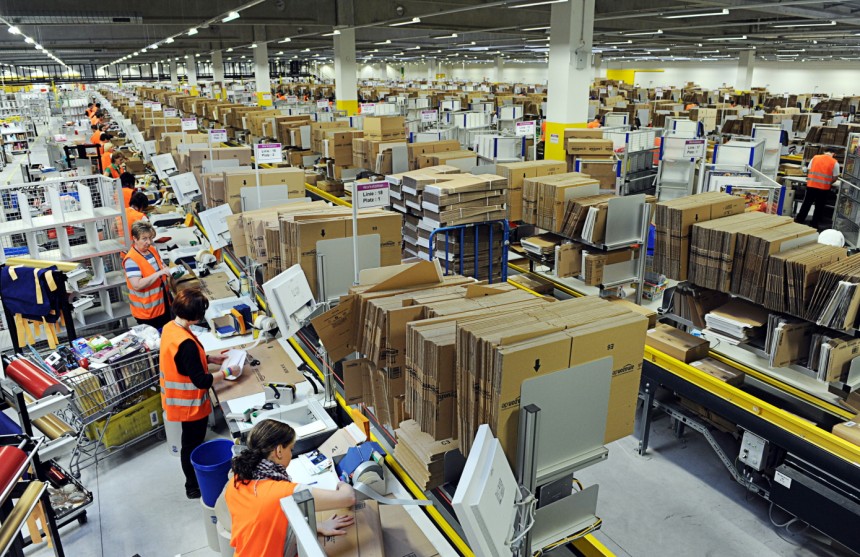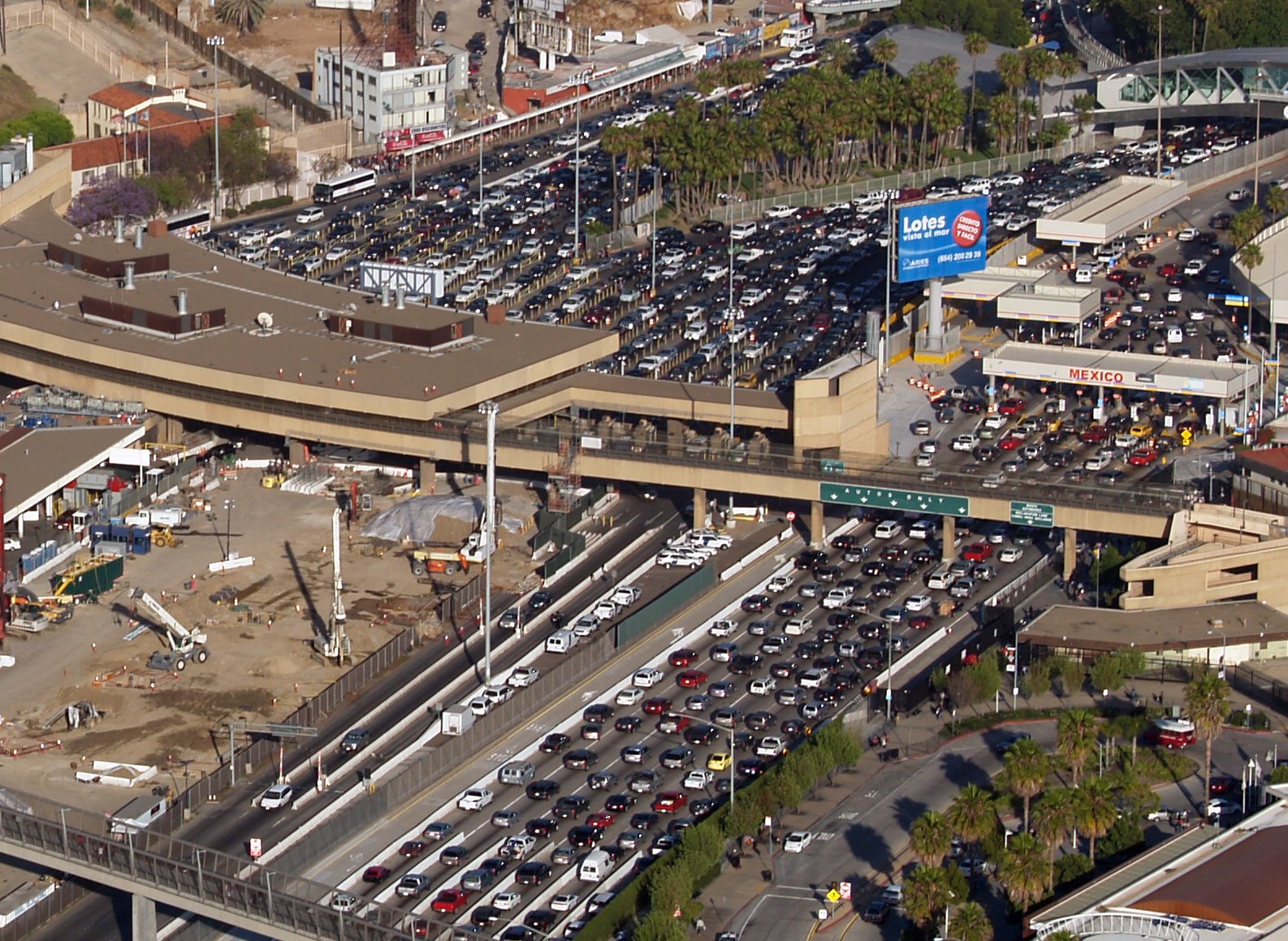Amazon in Tijuana: A Cause for Concern?

Photos of the newly built Amazon distribution centre overlooking the informal housing settlement of Colonia Nueva Esperanza in Tijuana, Mexico, have caused quite the stir. Many have interpreted the photos as a prime example of the unequally borne consequences of excess consumerism and capitalism, while others appeared hopeful about the plant’s potential for reviving the area. Once a farming enclave employing residents of the neighbourhood, the closing of these ranches left many in search of jobs and housing. Colonia Nueva Esperanza residents warmly welcomed the new job opportunities anticipated by the proposed amazon warehouse. However, some experts say that the harms incurred by the plant may, in fact, outweigh its benefits.
The city of Tijuana is situated on the U.S.-Mexico border, with the neighbourhood of Colonia Nueva Esperanza sitting close to another Amazon warehouse across the border in California. This geographical arrangement has led one scholar to speculate that the construction of this Amazon plant just south of the American border was no coincidence. Charmaine Chua believes that the Amazon centre will be used as a means to evade taxes and tariffs imposed by the U.S. government on goods coming from countries like China. If true, Americans could continue enjoying imported goods from across the world, all while paying reduced prices. If imports from China were shipped directly to the U.S. without being processed in Mexico first, this privilege would otherwise be stripped.
Chua, an Assistant Professor in the Department of Global Studies at the University of California, Santa Barbara, explains that as a result of Trump’s trade war with China, Mexico has stepped in as the unsung hero of American trade. The country has allowed China-U.S trade to continue operating without incurring high tariff costs, all thanks to a specific clause known as Section 321. This clause permits goods imported from Mexico priced at a maximum of eight hundred dollars to be free of tariff and tax charges. The creation of Section 321 can be traced back to the Tariff Act of 1930 and is still in use today as it permits businesses to comply with the multiple and complex laws stated by U.S. Customs and Border Patrol (CPB). In this way, the construction of an Amazon warehouse in Tijuana will serve as an intermediary between Chinese-imported goods and American consumers. Chua also states that having an operating plant in Mexico, where labour cost is generally less expensive than in the U.S., is a ‘win-win’ situation for Amazon. On the one hand, it gets to evade taxes, and on the other, it cuts down on labour costs.

The Amazon warehouse in Tijuana is also indicative of increasingly globalized consumption patterns. As discussed by journalists Vittoria Elliott and Louise Matsakis in their article, Why Amazon really built a new warehouse on the U.S.-Mexico border, they argue that the construction of this plant was a response to the high demand for e-commerce. As a result of COVID-19, many have turned to online shopping as a substitute for in-person shopping. Companies like Amazon appear to have rendered this consumption shift to be quasi-seamless. However, new processing plants are needed to meet the increasingly staggering demand of online consumption patterns — plants like the Tijuana warehouse.
One of the prime advantages of buying from Amazon is that it presents online consumers with the possibility of purchasing goods at competitive and often reduced prices compared to what they would be paying in local stores. This is often attributed to the fact that American companies have outsourced the production of their products for decades, allowing goods to be produced more cheaply. However, this has clear environmental impacts as carbon emissions increase due to the process of transnational product circulation. It also affects the people working to produce the goods primarily consumed by the Global North, as cheaper goods are often provided at the expense of the hyper-exploitation of workers in the Global South.
This also goes for the workers in the Amazon plants themselves, such as those in Tijuana. As stories highlighting the poor work conditions faced by Amazon workers have surfaced in the media in the last few years, the company has become notorious for its workplace violations. In some cases, workers have had their bathroom breaks monitored; in others, they have been pushed to urinate in bottles. The work conditions in Amazon’s Mexican warehouses appear largely the same. In an article published by Reuters entitled Inside Amazon’s shadow workforce in Mexico, employees at an Amazon warehouse in Mexico City exposed a practice of mandatory overtime — even as their work-weeks reached sixty hours or more. If workers did not comply with mandatory overtime demands, they were met with pay cuts and even redundancies. The authors also disclose that the company had imposed layoffs without paid severance, violating Mexican labour laws.
Considering all this, the shining new Amazon warehouse in Tijuana may not be as impressive as it seems. On a global scale, the construction of these plants contributes to the proliferation of consumerism and the perpetuation of workers’ exploitation in the Global South. On a more local level, Amazon is well-known for its workplace violations, which the residents of this neighbourhood will most likely face. Its construction also raises a broader question of why this area had been forsaken for so long, leaving the residents with little choice other than to seek employment in discriminatory work environments. It will be interesting to assess what comes next, particularly whether Northern Mexico’s second Amazon plant will help the small neighbourhood of Colonia Nueva Esperanza or simply continue the existing cycle of socio-economic inequality.
Featured Image: “amazon warehouse” by hnnbz is licensed under CC BY 2.0.
Edited by Rory Daly
